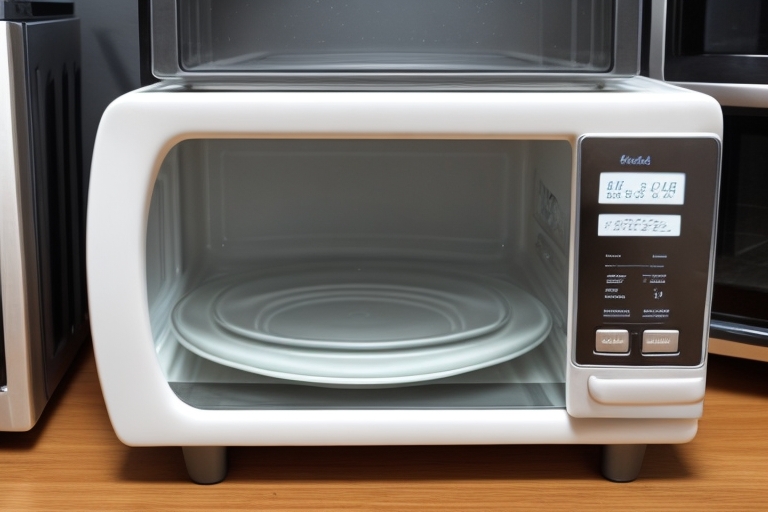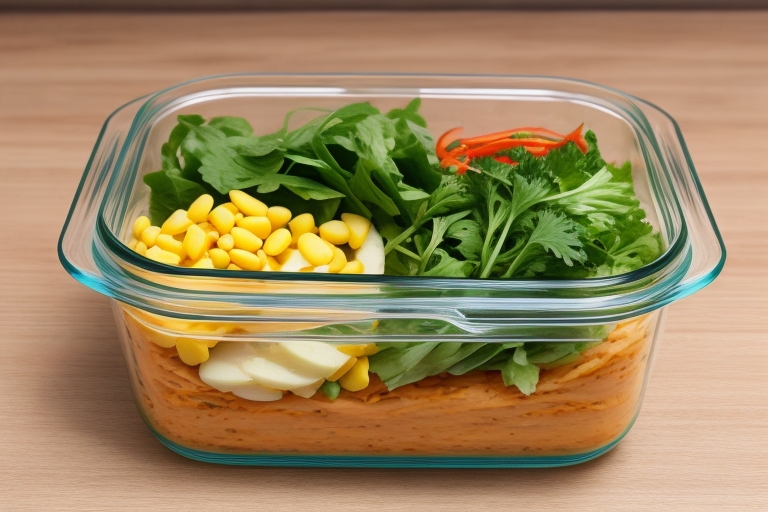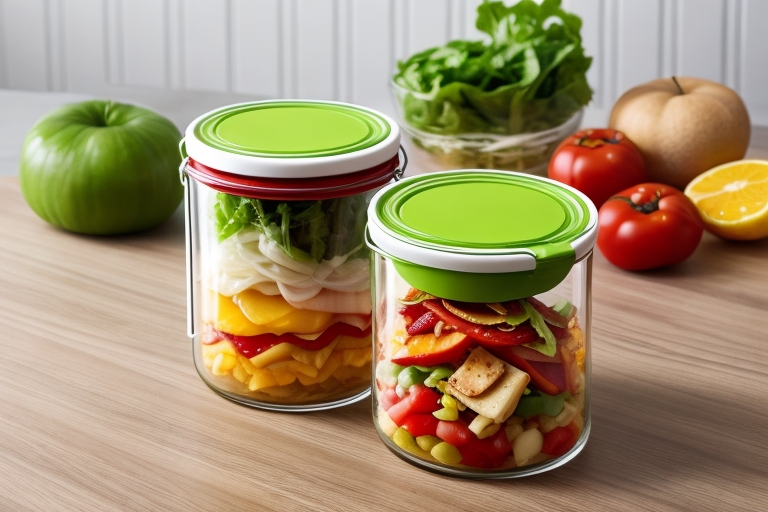
Microwave-safe food containers: a crucial aspect of our daily kitchen routine often overlooked. Ensuring that the containers we use are microwave-safe is not just about convenience; it’s a matter of health and safety.
Using containers that aren’t microwave-safe can lead to chemicals leaching into your food, posing potential health risks. The last thing you want is a seemingly innocent reheating session to turn into a health hazard.
In this blog post, we’re diving into the realm of microwave-safe food containers. We’ll unravel the mysteries of symbols, materials, and labels, guiding you on how to make informed choices for your culinary adventures. Stay tuned for a microwavable journey that keeps both your meals and health intact!
Explaining the Importance of Food Safety
Food safety is like the unsung hero of our daily lives—often taken for granted, yet irreplaceably crucial. It’s not just about avoiding a stomachache; it’s about safeguarding our well-being.
First and foremost, food safety ensures that the meals we savor are free from harmful microorganisms that can wreak havoc on our health. From bacteria to viruses, the kitchen can be a battleground if we’re not vigilant. Proper food handling, cooking, and storage are the knights in shining armor against these unseen invaders.
Beyond the immediate physical risks, maintaining food safety contributes to long-term health. Chronic illnesses, allergies, and other health issues can be triggered by contaminated or improperly handled food. By prioritizing food safety, we’re investing in a healthier, happier future.
Food safety isn’t just an individual responsibility; it’s a community effort. By practicing safe food habits, we contribute to a collective shield against foodborne illnesses. So, let’s appreciate the unsung hero and make food safety a cornerstone of our culinary adventures. After all, a healthy plate is a happy plate!
Understanding Microwave-Safe Containers

When a container proudly flaunts the label “microwave-safe,” it’s essentially giving you the green light to zap your leftovers without worry. But what does this label really mean?
A microwave-safe container is crafted from materials that can withstand the heat generated by microwaves without leaching harmful chemicals into your food. The last thing you want is a chemical cocktail accompanying your reheated lasagna.
Common materials deemed microwave-friendly include glass, ceramic, and specific types of plastic. Glass and ceramic containers are inherently heat-resistant, while some plastics are formulated to withstand the microwave’s high temperatures without melting or releasing toxins.
The key is to be a savvy detective when it comes to labels and symbols. Look for icons like a microwave or dish symbol on the container, indicating its compatibility with microwave use. Some plastics come with a “microwave-safe” label or a number designation (like “1” or “5”) to guide you. Avoid containers without any indication, as they may not be up for the microwave challenge.
In the realm of microwave-safe containers, knowledge truly is power. So, before you press that start button, give your container a thorough check for the microwave’s seal of approval. Your taste buds will thank you for a chemical-free culinary experience!
Safe Materials for Microwave Use
- Glass: Glass containers are microwave superheroes. Not only are they durable, but they can also withstand the heat of the microwave without breaking a sweat. Their transparency allows you to monitor the reheating process, and the best part? No chemical leaching. Glass is a non-porous material, meaning it won’t absorb flavors or odors from your previous culinary endeavors. It’s a clear win for both safety and convenience.
- Ceramic: Ceramic containers bring an elegant touch to microwave safety. Their heat retention properties ensure that your food is cooked evenly, and the microwave is no match for their resilience. Ceramics distribute heat uniformly, preventing hotspots and ensuring your dish is thoroughly warmed. Just be cautious with fancy designs or metallic accents, as they might not be microwave-friendly.
- Microwave-Safe Plastics: Not all plastics are created equal, but some are indeed microwave-safe. Look for containers labeled with microwave-safe symbols or those made from materials like polypropylene (PP) or high-density polyethylene (HDPE). These plastics are designed to withstand the microwave’s heat without releasing harmful chemicals into your meal. They’re lightweight, versatile, and an excellent option for your reheating needs.
- Avoiding Unsafe Materials: Now, let’s talk about what to keep out of the microwave party. Metal and aluminum foil are a big no-no—they can cause sparks and even start a fire. Similarly, steer clear of plastics labeled with a “not microwave-safe” warning, especially those made of polystyrene. These materials may release harmful substances when exposed to high temperatures, putting a damper on your microwave festivities.
In the world of microwave-safe materials, choosing the right container is like selecting the perfect sidekick for your culinary adventures. With glass, ceramic, and the right plastics by your side, you can enjoy safe and delicious microwave meals without a hint of worry.
Tips for Using Microwave-Safe Containers

- Avoid Overheating: Playing it safe in the microwave world means following the rules. Respect the recommended heating times and power levels specified in your microwave-safe container’s user manual. Overheating not only risks container damage but can also lead to messy food explosions. Trust the process, and your microwave-safe container will thank you.
- Covering Food: Keep your microwave-safe containers in the mood for moisture. When reheating, consider using microwave-safe lids or covers to prevent your food from drying out or turning into a Jackson Pollock painting on the microwave walls. If you don’t have a matching lid, opt for microwave-safe plastic wrap, ensuring it’s vented to let steam escape. Your leftovers will emerge as succulent as they were the first time around.
- Stirring and Testing: Be a chef, not a gambler. Stir your food halfway through the reheating process to promote even heating. This prevents those frustrating cold spots in the middle of your dish. After the microwave beeps its victorious tune, don’t dive in just yet. Test different areas of your food to make sure it’s uniformly heated. No one likes a surprise cold bite in their supposedly piping hot meal.
Using microwave-safe containers isn’t just a matter of tossing them in and hitting start. It’s an art form that involves patience, precision, and a dash of common sense. Follow these tips, and your microwave-safe containers will be your trusty allies in the quest for perfectly reheated meals.
FAQs
- Can I microwave plastic containers?
- It depends on the type of plastic. Look for the microwave-safe symbol on the container, usually a square with wavy lines.
- What plastics should I avoid in the microwave?
- Steer clear of containers without a microwave-safe label, as they may release harmful chemicals when heated.
- Are glass containers safe for microwaving?
- Yes, glass is generally safe for microwaving. Just make sure there are no metal parts, and it’s labeled as microwave-safe.
- Can I use aluminum foil in the microwave?
- Avoid using aluminum foil unless the packaging explicitly states it’s safe. Metal can cause sparks and fire in microwaves.
- Is it safe to microwave paper containers?
- Check for a microwave-safe label. If it’s absent, transfer food to a microwave-safe dish, as some paper products may contain additives unsuitable for microwaving.

Pingback: How Many Food Storage Containers Do I Need?